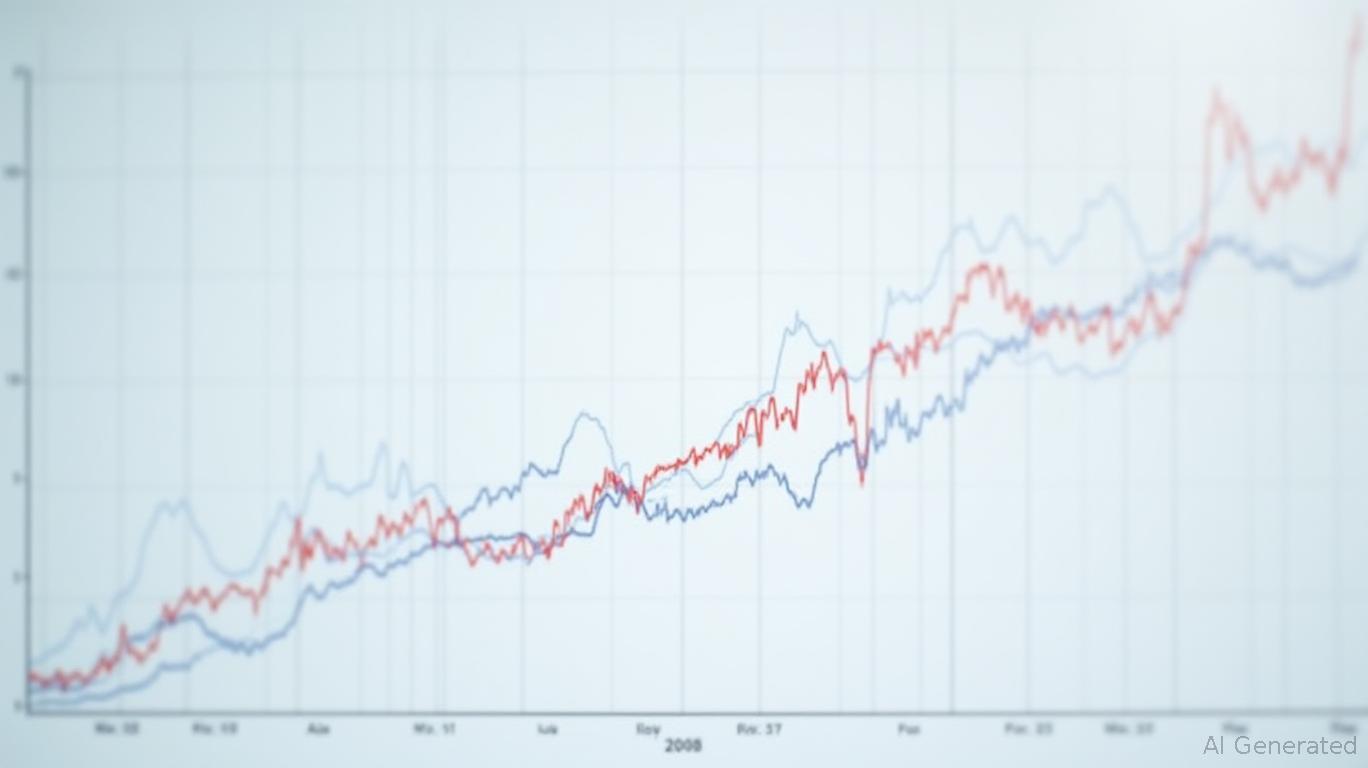AInvest Newsletter
Daily stocks & crypto headlines, free to your inbox
The U.S. equity markets are at a crossroads. As geopolitical tensions simmer—most notably between Israel and Iran—and the Federal Reserve's policy stance remains stubbornly anchored, investors are grappling with a landscape of elevated risks and muted returns. In this environment, the search for resilience has never been more critical. Defensive sectors like healthcare and utilities, historically stalwarts during periods of volatility, now offer a compelling playbook for investors seeking stability and income. Let's dissect why these sectors are primed to outperform—and which stocks stand out.
The Federal Reserve's June 2025 decision to hold the federal funds rate at 4.25%–4.5% underscored its precarious balancing act. While inflation remains elevated—personal consumption expenditures (PCE) are projected to hit 3% by year-end—labor market softening and geopolitical uncertainties have dampened confidence in aggressive rate cuts. Federal Reserve Chair Jerome Powell's warning about tariff-driven inflation risks and the FOMC's revised GDP forecast (now 1.4% for 2025) signal a prolonged period of policy caution.
This ambiguity creates fertile ground for defensive investing. Historically, sectors with stable cash flows and low sensitivity to interest rates—like healthcare and utilities—have outperformed during periods of Fed uncertainty. Between 2008–2009 and 2020–2021, healthcare stocks returned 14% and 19%, respectively, versus the S&P 500's 6% and 18% gains during those crises.

Geopolitical risks, particularly the Israel-Iran conflict, threaten to disrupt global energy markets and inflation dynamics. Analysts like Mark Zandi of
warn that stagflation—a mix of slowing growth and persistent inflation—is now a plausible scenario. In such environments, utilities and healthcare stocks act as ballast.Utilities, with their regulated monopolies and predictable rate hikes, are insulated from macroeconomic swings. Their dividend yields—averaging over 3%—provide a hedge against market volatility. Meanwhile, healthcare's demand inelasticity (patients still require care regardless of economic cycles) and innovation-driven growth in medical technology position it as a “buy and hold” asset.
Let's drill into specific stocks that combine financial fortitude with dividend discipline.
Medtronic (MDT)
Actionable Insight: Its 46-year streak of dividend hikes and 6%–8% annual EPS growth make it a must-own defensive tech play in healthcare.
Merck (MRK)
Actionable Insight: Its 4-star rating and 9% dividend growth over five years make it a top pick for income seekers.
Portland General Electric (POR)
Actionable Insight: A 2025 EPS guidance of $3.23 and a P/E of 14.5 offer a safety net in volatile markets.
AES Corp. (AES)
Investors should overweight healthcare and utilities to capitalize on their defensive attributes:
1. Reallocate 10–15% of equity exposure to defensive sectors. Use ETFs like the Health Care Select Sector SPDR (XLV) or Utilities Select Sector SPDR (XLU) for broad exposure.
2. Target high-yield, low-volatility stocks: JNJ, H2O, and POR offer yields above 3% with stable balance sheets.
3. Monitor Fed signals: If rate cuts materialize by year-end, utilities will benefit from falling borrowing costs and rising multiples.
No investment is without risk. Healthcare faces regulatory headwinds (e.g., drug pricing debates), while utilities are exposed to weather patterns and geopolitical energy shocks. However, the sector's valuation discounts—Medtronic at 22% below fair value, Merck at 26%—suggest these risks are already priced in.
In a world where geopolitical storms and Fed crosscurrents dominate headlines, the old adage holds: “Safety is the highest return.” Healthcare and utilities are not just havens for income—they're growth engines in disguise. Investors who lean into JNJ, MDT, H2O, and POR today may well find themselves ahead of the curve when the next crisis—or recovery—arrives.
Stay resilient. Stay invested.
Andrew Ross Sorkin's analysis, while authoritative, is not financial advice. Always consult a professional before making investment decisions.
Tracking the pulse of global finance, one headline at a time.

Dec.17 2025

Dec.17 2025

Dec.17 2025

Dec.17 2025

Dec.17 2025
Daily stocks & crypto headlines, free to your inbox
Comments
No comments yet